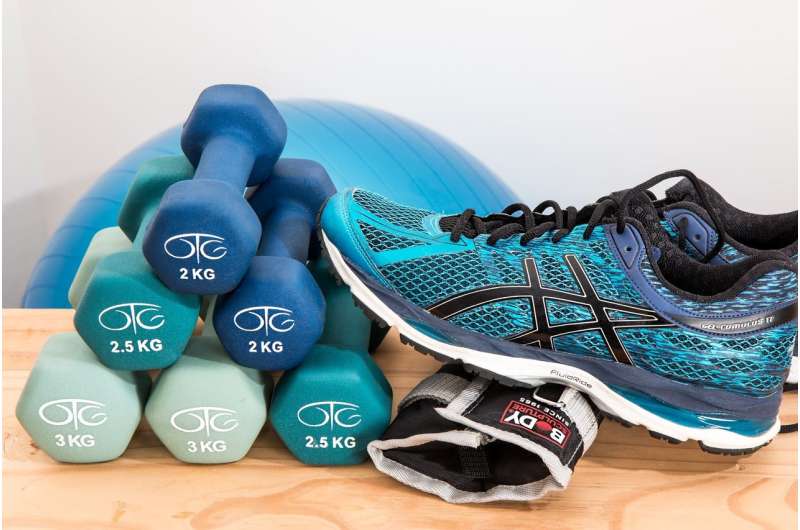Combining aerobic and resistance training may offer the most benefits for women during and after chemotherapy for breast cancer, according to a new U of A study. The research also showed that women who included resistance training in their workouts were more likely to stick with regular exercise after their cancer treatment.. Credit: CC0 Public Domain
Regular exercise during and after chemotherapy improves quality of life and reduces cancer-related symptoms, U of A researcher finds.
Despite confirming that benefits of exercise for breast cancer patients undergoing chemotherapy wear off quickly once they stop, a new University of Alberta study also showed that patients prescribed a training regimen with a resistance-training component were more likely to continue exercising once their treatment ended.
In the study, led by U of A post-doctoral fellow Ki-Yong An, 301 breast-cancer patients were put through varying exercise programs in an effort to identify the optimal exercise mix.
The Combined Aerobic and Resistance Exercise (CARE) Trial compared a thrice‐weekly standard dose of 25–30 minutes of high-intensity aerobic exercise on an exercise bike, a higher dose of 50–60 minutes of aerobic exercise and a 50- to 60-minute combination of aerobic and resistance exercise. The exercise programs, which ran for about five months, began within a week of starting chemotherapy and continued for three weeks after the last treatment.
After the initial course of monitored exercise, participants were encouraged to keep exercising but were left to their own devices. An and his team then followed up with them at intervals of six, 12 and 24 months.
"Exercise during chemotherapy for breast cancer is associated with a number of improvements in patient health during chemotherapy; however, many of the benefits of exercise dissipate quickly after cessation of the exercise," said An.
And while there wasn't much evidence that supported any differences between the prescribed doses and types of exercise during the two-year followup period, An said engaging in combined exercise during chemotherapy spurred increased exercise participation rates after chemotherapy, as well as higher muscular fitness in the long term.
In fact, roughly half of patients who underwent the combined fitness program were still meeting the resistance training portion at the six-,12- and 24-month followup, while only one-third of patients prescribed high-dose aerobic exercise were meeting the resistance guideline.
An also noted that patients who took part in the combined exercise outpaced their high aerobic counterparts in upper-body muscular endurance at 12 months.
Regardless of the exercise intervention group, participants who consistently participated in regular exercise, especially combined exercise, after chemotherapy had relatively better quality of life, lower cancer-related symptoms and higher fitness levels.
"Taken together, these findings suggest that combined exercise during and after chemotherapy may be optimal for breast cancer patients," said An.
"Exercise only during chemotherapy is not enough for their quality of life after treatment. To keep their higher quality of life and good mental health, they need to continue their exercise after treatment."
More information: Ki‐Yong An et al. Effects of exercise dose and type during breast cancer chemotherapy on longer‐term patient‐reported outcomes and health‐related fitness: A randomized controlled trial, International Journal of Cancer (2019). DOI: 10.1002/ijc.32493
Journal information: International Journal of Cancer
Provided by University of Alberta
























